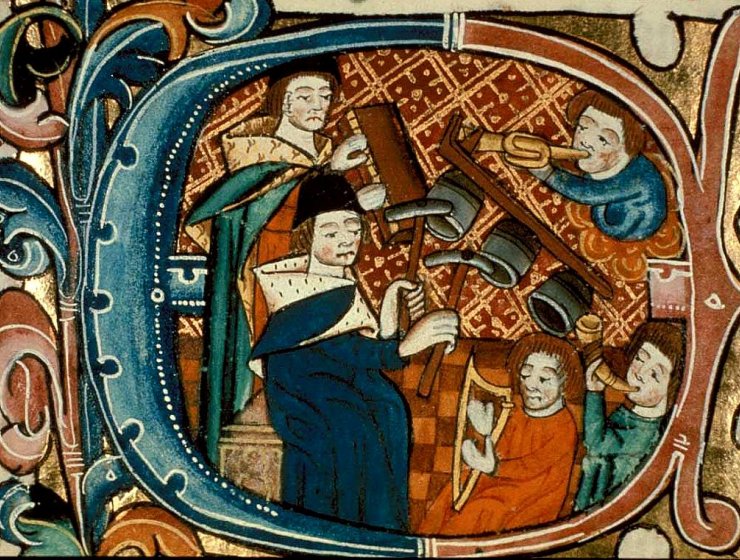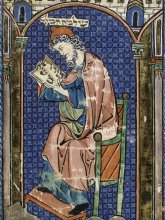
-Index-
Special Issue
The allegorical interpretation of myths: from origins to Plato
Loraine OLIVEIRA
Original title: A interpretação alegórica de mitos: das origens a Platão
Keywords: Allegory, Interpretation, Myths, Philosophical discourse, truth.
The aim of this paper is to present some of the main aspects of allegory understood as hermeneutical practice. Allegory takes as certain that the text to be interpreted possesses some truth content. At the same time that the first allegorical interpretations of Homer and Hesiod appear, there also appear harsh criticisms of their poems. Such criticisms can be grouped under two main headings: the demythologization of the cosmos and the immorality of gods. Plato has behind him two centuries of disputes about the meaning of the poems, and clearly stands against allegorical practice, even though he does not abandon myths. What happens is that he displaces the truth content of the text: truth is not to be sought in poetry anymore, but in philosophical discourse.
John of Damascus and the use of the letters of Paul in his writing An Exact Exposition of the Orthodox Faith
Eirini ARTEMI
Keywords: Adam, Christology, John Damascenes, Moses, Orthodox Faith, Paul’s theology, Son of God.
In this paper, we are going to present how John Damascenes used the Pauline Literature to make the treatise An Exact Exposition of the Orthodox Faith, mainly the part of Christology. John uses the Pauline epistles in order to speak about the Deity. God gives us the ability to know Him through a mirror. John uses more texts from Paul's epistles than texts of other Church fathers. The passages from epistles are the base for the development of John's dogmatic teaching and arguments. So, by this way, we will reach to the conclusions that the main points in the teaching of John's this work are the some of the main points in the theology of St. Paul mainly. The sin of Adam, and each one’s personal sins, all men are sinners and in need of redemption. In order to save mankind, God sent his Son into the world, born of a woman. Christ communicates his grace and justifies all who believe in him, and are baptized. Christ's grace includes the sending of the Holy Spirit, which constitutes the believer as an adopted child of God. Jesus is the fulfilment of all the prophecies of the Old Testament, and has established a New Covenant to replace that of Moses; therefore, Christians are not bound by the ceremonial and dietary laws, and circumcision, contained in the Law of Moses. This insight of Paul made Christianity into a religion open to all people.
The access to Being through Beauty. Notes on the beauty of the world according to Bonaventura
Gerald CRESTA
Original title: El acceso al Ser a través de la Belleza. Notas sobre la belleza del mundo según Buenaventura
Keywords: Beauty, Being, Knowledge of Beauty, Transcendentals.
From the perspective of the transcendental concepts of being, beauty has been submitted to occupy a place that has promote discussions on its legitimacy among the other transcategorial concepts. One aspect of this debate reflects the importance of the beauty in the world as a way of privileged access to understanding of being. Along with the perfect Unity, inescapable from the platonic conception of Ideas, beauty is in the medieval scholastic an order that shines forth in the diverse multiplicity of bodies. In this way, presents a formal intrinsic quality that allows it’s to transmit to perception – sensorial and intellectual – the Intime frame which is the ontological structure of the world. This paper points some distinctive notes of that symbolic nature in the way that is considered under the Bonaventura conception of the world.
The Circulation of the Legenda Aurea in Portugal: a case study on D. Fernando’s hagiography
Clínio de Oliveira AMARAL, João Guilherme Lisbôa RANGEL
Original title: A circulação da Legenda Aurea em Portugal: estudo de caso da hagiografia do D. Fernando
Keywords: Circulation, Infante Santo, Legenda Aurea, Portugal.
The notion of mobility, at any point in history, is very wide. In order to comprehend it in the Middle Ages, we chose to analyze it through its circulation in written texts. Therefore, the objective of this article is to demonstrate the circulation of A Legenda Aurea in Portugal during the second half of the 15th century. In order to do so, we will present number of possible influences of this text on the Trautado da vida e feitos do muito vertuoso S.or. Infante D. Fernando, a hagiography written by the friar João Álvares in 1450 with the purpose of promoting the royal sanctity of the infant d. Fernando, known as Infante Santo since then.
The Holy Empire and the Papacy in late medieval thought: some ideas about the precedence in the Italian and Spanish chronicles of the 14th and 15th centuries
Josué VILLA PRIETO
Original title: El Sacro Imperio y el Papado en el pensamiento bajomedieval: algunas ideas sobre la precedencia en las crónicas italianas y españolas de los siglos XIV y XV
Keywords: Cultural History, Empire, History of ideas, Humanism, Papacy, Political thought.
This study analyses the conception of the Holy Roman Empire in the Italian and Spanish chronicles of the Late Middle Ages: origins, authority and tensions with the Papacy for a preeminent position within universal power. After the scholasticism historiographical disputes (XIIth-XIIIth centuries), humanists write new interpretations of the genesis of the Holy Roman Empire wondering about the desappearance (or not) of the Roman imperial potestas and if it continues in Byzantium or the Papacy, and where the Charlemagne's authority comes from. The comparison of the Italian and Spanish sources allows to note different political intentions in a context of mutual cultural influence.
Social Relations of Prior Vasco de Ataíde: The Priory of Crato of the Order of the Hospital from 1453 to 1491
Dirceu Marchini NETO
Original title: As Relações Sociais do Prior D. Vasco de Ataíde: o Priorado do Crato da Ordem do Hospital de 1453 a 1491
Keywords: Battle of Toro, Order of the Hospital, Portugal, Priory of Crato, Vasco de Ataíde.
This article analyzes the social relations that involved the Priory of Crato of the Order of the Hospital in the days of D. Vasco de Ataíde, between the years 1453-1491. The Priory of Crato was the Portuguese branch of the Order of the Hospital of St. John of Jerusalem, a religious and military order. The text presents a study about the family Ataíde, about the bond of this family with the kings that governed Portugal during the analyzed period. It also presents an analysis of the people who composed the prior's house of this prior and the alliance made between D. Vasco de Ataíde and the hospitaller prior of Castile on the occasion of the Battle of Toro.
The right of resistance of the subjugated people. An example of case: the late medieval Galicia
Cecilia DEVIA
Original title: El derecho a la resistencia de los dominados. Un ejemplo de caso: la Galicia bajomedieval
Keywords: Galicia, Late Middle Ages, Orders, Right of resistance, Violence.
The purpose of this article is to show some of the results of an investigation in progress that pretends to examine the right of resistance exercised by the subjugated people, through a theoretical-documentary approach that uses as example of case the late medieval Galicia. It will be approached within a wide range that extends from the daily practices taken to preserve their own interests, to the study of open and declared revolts, such as the Irmandiño Revolt in 1467-1469. The theory of the three orders, considered as the prevailing worldview at the time, will be briefly discussed. Subsequently this problems will be studied through the analysis and interpretation of various sources.
The awakening of Aragonese Humanism in Curial and Guelfa
Francis RASSELI
Original title: O despertar do Humanismo Aragonês em Curial e Guelfa
Keywords: Curial and Guelfa, History and Literature, Humanism, Novel Cavalry, Representation.
When we glimpse the slow turning off of the medieval lights in the fifteenth century, we see the gradual transformation (and secularization) of the code values that guided that civilization (ethics, morality, courtesy, Christian education, etc.). In this sense, literature offers the historian, who focuses on transition time, a remarkable promontory where we can observe the interpenetration of different historical times, as taught Fernand Braudel (1902-1985). That is why the study of the cavalry novel (realistic) Curial and Guelfa allows this unveiling of life in the high layers of that century. Life in the courts, civilized life, polished life. Thus, it is in our interest to analyze how the author of the novel built a certain idealized image of their own past, as forged in a text (beautifully written) an ideal chivalrous – under the humanist guise – to take as paradigmatic model King Peter III, the Great (1239-1285) of Aragon and Valencia and Count of Barcelona. For this, we will use of the (first) translation into Portuguese made by Ricardo da Costa (by invitation of the Universitat d'Alacant) to the International project IVITRA, that was published in the University of Santa Barbara (California). Our theoretical framework is based on the concept that the real power of the Middle Ages was built by cultural advertisements of heralds that lived in the cuts, thesis defended by José Manuel Nieto Soria. Besides that, we use the concept of representation exposed by Roger Chartier (1945- ).

Reviews
Los Pilares de Europa. La Edad Media en el British Museum
Leticia BERMEJO DE RUEDA






















































































